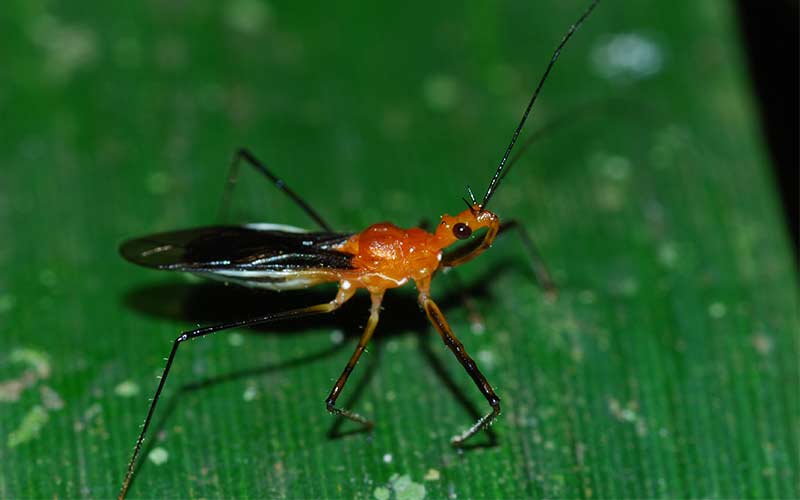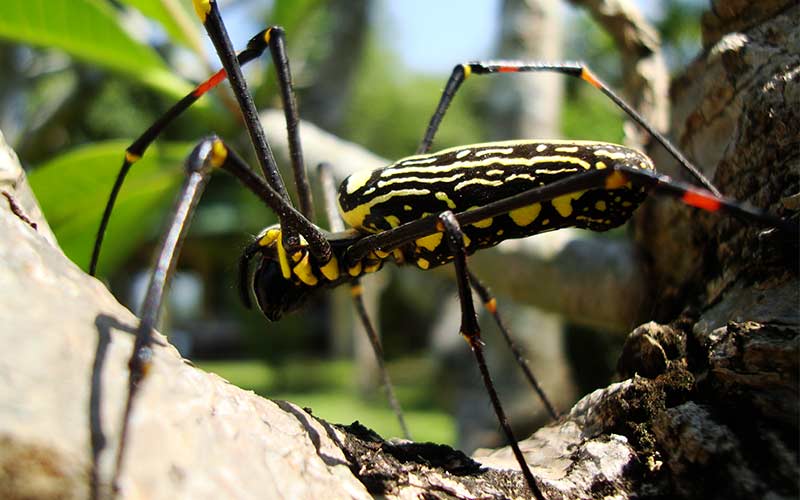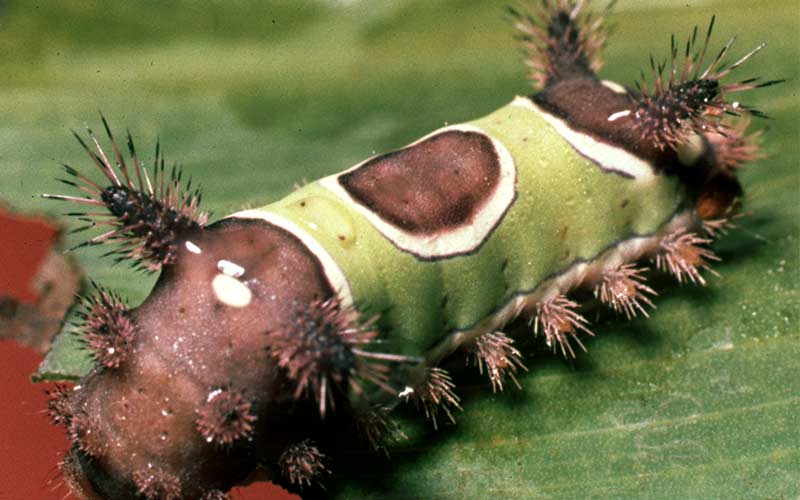By Dylan Stuntz, American Forests
With Halloween almost upon us, learn about some of the scariest, creepiest and crawliest denizens of the forest. Warning for anyone with a general discomfort around insects: This piece may make you squirm!
Assassin Bug

This bug lives up to its name! Assassin bugs use a rostum, a long tool on the front of their face, to pierce other insects and inject a toxin similar to a spider’s venom to liquefy their prey’s insides. The rostrum serves as both syringe and vacuum, as after the bug has been liquefied, it will be sucked dry. Some species of assassin bugs will then take the corpse of the unfortunate ant, beetle or termite and stick it to their back, to disguise themselves from other predators, and to mask their scent to other prey.
Bullet Ant

The bullet ant has earned its name because of the potent venom found inside the stinger in its abdomen. The pain is apparently comparable to being shot, hence the bullet reference. It’s ranked as one of the most painful stings on the Schmidt Pain Index, which rates the comparative pain of different insect bites and stings. Supposedly, the sting is 30 times worse than a bee sting, and lasts for 12-24 hours. The creator of the Schmidt Pain Index, Justin Schmidt, described the sting during an interview with Great Big Story as “pure, intense, brilliant pain … Like walking over flaming charcoal with a three-inch nail embedded in your heel.” Pretty scary!
Fishing Spider

Some spiders from the genus Dolomedes do not spin webs, but instead perch on top of rivers and ponds, using surface tension to stay afloat. The minute that a fishing spider feels a vibration along the surface, it leaps out and grab its prey, whether that be an unlucky insect or even a fish. They can be found on every continent except Antarctica, and have been witnessed eating prey up to five times their size!
Tick

Invisible creatures that suck your blood and then leave you with a bacterium that causes you to feel sleepy, lethargic and sore? It’s not vampires, just the common tick! (Bran Stoker would be bitter of these blood-suckers.) Ticks are scary not because of their appearance, but because of the fact that they’re almost invisible, and transmit Lyme disease. Out of all of the creatures on this list, these are probably the most likely to run into. Read about how to prevent and remove these creepy creatures here.
Emerald Jewel Wasp

This parasitic wasp can create literal zombies, but only from cockroaches. The emerald jewel wasp will sting a cockroach, injecting venom directly into the victim’s brain, inhibiting the creature’s motivation to walk, run or resist. The wasp can then lead its victim back to the wasp’s nest, where wasp larvae will feed on the lethargic cockroach for the next week. The wasp is only found in Africa and Asia, and only uses its mind-controlling venom on other bugs. At least for now…
Golden Orb-weaver Spider

This spider spins webs so strong that it will occasionally catch snakes, bats or birds as prey. The webs are strong enough that fishermen have used them as nets to catch fish. While the golden orb-weaver spider consistently feed on insects as its main source of food, if an unlucky larger creature gets caught, the spider’s not opposed to feasting for a week. While no human has even been caught by one, a recent study found that orb-weavers living in cities are getting bigger and having more children. Yikes!
Saddleback Caterpillar

This caterpillar has “horns” that protrude from its body, a sting from which expels venom that can cause stinging, burning, fever or nausea that last up to five hours! While it may have a cute little saddle on it, don’t cuddle this caterpillar, otherwise you’ll regret it.
Even if you get dressed up this Halloween with the goal of spooking, you may not hold a candle to these creepy creatures! Keep in mind though, while these creatures may be scary, they hold an integral place in their ecosystems. If you ever spot one of these, after gasping in terror, take some time to respect the diversity of life that these animals contribute to.